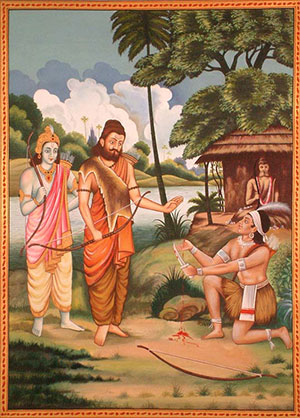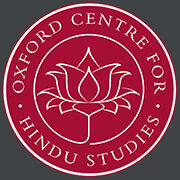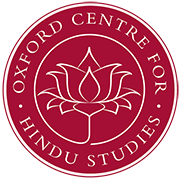Caste is one of the most controversial and misunderstood aspects of Hinduism. Many in the west consider it an evil. The word ‘caste’ itself is from the Portuguese; the correct term is varna. In his course: Introduction to Hindu Ritual, Yoga, Caste, and Gender, Dr Nick Sutton explains caste as follows:

The four varnas, or social divisions [castes], referred to by the Purusha-sukta hymn of the Rig-veda are the brahmanas, kshatriyas, vaishyas, and shudras. The brahmanas were the priests and scholars who were able to perform rituals and give scriptural guidance to the wider community. The kshatriyas were the rulers and warriors who governed and protected the community, usually acting under the guidance of the brahmanas. The vaishyas were the merchants and landholders responsible for agricultural production. The shudras were the artisans, labourers, craftsmen, and performing artists. Although only one verse of the Rig-veda-samhita refers to this fourfold division of society, it is expounded upon at greater length in texts such as the Mahabharata, Bhagavad-gita, Puranas, and Manu-smriti where it is regarded as fundamental to the dharmic way of life.
Introduction to Hindu Ritual, Yoga, Caste, and Gender (Course book p.56)
So, is it an evil?
There are a number of reasons why caste has come to be controversial but probably the most significant one is the discrimination that has been practiced against the lower castes, even to the extent of virtual exclusion from society. An overwhelming majority of Hindus today would feel that such practices should never have been regarded as dharma. In fact, because such customs are generally based on pride and a sense of disregard for others, many Hindus would argue that caste-based discrimination is in fact the polar opposite of true dharma. Moreover, many today feel that the system is of no real religious value; it simply creates divisions between people and fosters pernicious attitudes towards others. Hence most of the great modern teachers of Hinduism have urged people to show less regard for caste and to understand dharma in relation to virtue rather than varna.
Introduction to Hindu Ritual, Yoga, Caste, and Gender (Course book p.57)
What do Hindu scriptures say about caste?
It is in the Ramayana, Mahabharata, Bhagavad-gita, Puranas, and Dharma-shastras that we find consistent reference to varna and here the idea of this fourfold division of society is fully established. The Mahabharata refers repeatedly to these social divisions with rigid demarcations being drawn. There is a hierarchy that necessitates different lifestyles, practices, and even beliefs for different groups. Thus although brahmanas, kshatriyas, vaishyas, and shudras are all forms of human beings, the distinctiveness of each type is at least as significant as the commonality. The type of human form one is born into is dependent on the acts performed in the previous life; hence one’s social position is not arbitrary or flexible, but a divinely ordained placement in the natural order of the world.
Introduction to Hindu Ritual, Yoga, Caste, and Gender (Course book p.59)
So, if I’m born into a particular caste, that’s it?
If the designated qualities of a shudra are not found in a shudra then he is not a shudra. And if the designated qualities of a brahmana are not found in a brahmana then he is not a brahmana.
O serpent, a person is to be known as a brahmana when the appropriate mode of life is witnessed. When that way of living is absent then a person should be accepted as a shudra. (Mahabharata, 3.177.20–1)
But when a shudra displays restraint, truthfulness and dharma, I consider him to be a brahmana. (Mahabharata 12.182.8)
From this we can see that the idea that varna should be determined by quality rather than birth is not new. However, the general expectation seems to be that one born into a particular varna will possess the qualities of that varna. When challenged about the caste system and the fact that Hindu scriptures support the idea of varna divisions, many Hindus will respond by insisting that caste and varna are different from one another and that whereas caste is determined by birth, varna designation was contingent on qualities. As we have seen this point of view is not entirely correct but nonetheless there is some evidence to support it in these verses from the Mahabharata.
Introduction to Hindu Ritual, Yoga, Caste, and Gender (Course book p.65–66)
Caste, its origins, and its modern development are hugely complex and controversial topics and these are just a few ideas and definitions to help understand it better. We leave you with a short section from Bhagavad-gita that describes the ideal nature of the varnas.
40. There is no form of existence either on earth or amongst the gods in heaven that is free of the effect of these three gunas (qualities) that arise from prakriti (matter).
41. The different actions of the brahmanas, kshatriyas, vaishyas and shudras are designated according to the gunas that arise from their inherent nature (sva-bhava).
42. Tranquillity, restraint, austerity, purity, patience, honesty, wisdom, practical knowledge, and faith in religion are the duty of the brahmana, born of his inherent nature.
43. Heroism, energy, resolve, expertise, never fleeing from battle, charity, and the lordly disposition are the duty of the kshatriya, born of his inherent nature.
44. Farming, tending cows, and commerce are the duty of the vaishya, born of his inherent nature. Work in the service of others comprises the duty of the shudra, born of his inherent nature.
Bhagavad-gita 18.40–44 (trans. Nick Sutton)


The above references offer an accurate elucidation of what is Varna. While the cross-fertilisation of languages has established that ‘caste’ is what we mean when we speak of boundaries/limits/codes/classification of people and their habitat and habits, this course rightly asks the question – ‘is it good or bad?’ Here I am sure, with Dr Nick Sutton’s illustration of the texts, peeling open the meanings from Sanskrit, the student will understand first – what is meant by Varna. This is no validation of what has become eroded into an unjust war of superiority and inferiority, but to investigate the meaning of the term, the concept and how it worked – not always congenially – in the history of society.
Before addressing the corruption of the concept and practice it is better to understand how the inner substance of the individual within the community can also cross boundaries beyond varna. This course will no doubt be nuanced in its approach to a significant subject for our times, in India and globally.
Misinterpretation and practice of the caste system in India is so rigid for centuries that people really think that they are born in lower caste due to their bad karma in the last birth and are passive. How can one change this? Can academicians effort to convince them otherwise by showing them the true meaning in the texts. Again when almost whole Mahabharata talks about kshatriya dharma and Duryodhana with his brothers attaining Swarg just makes it very difficult for people to see the difference between Varna and caste (by birth). Some privileged sector of society has propagated this immoral idea of social apartheid and I really want to know what is the solution ? Will it take another Mahabharata to change it or inequality in economics will trigger it? I witnessed South African apartheid (only legal boundaries ) disappearing while living in Southern Africa, so I will stay hopeful.